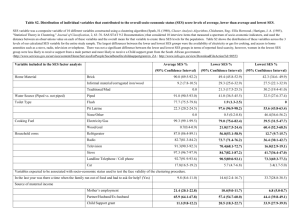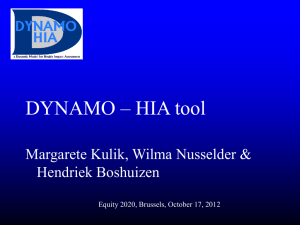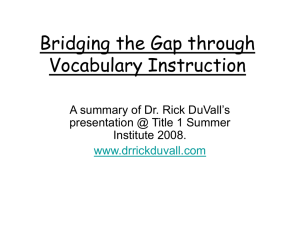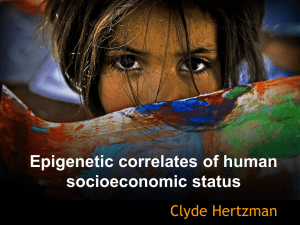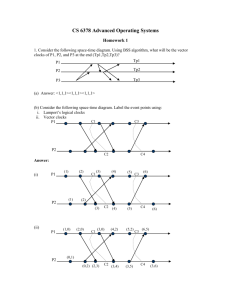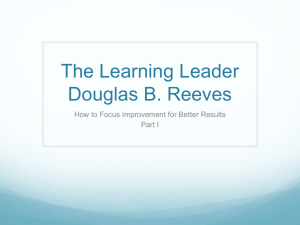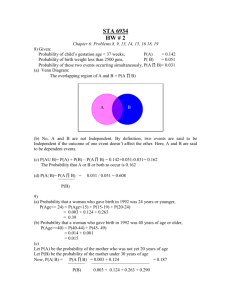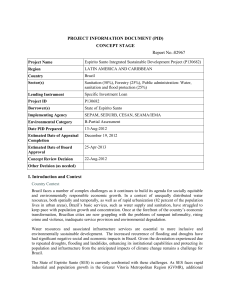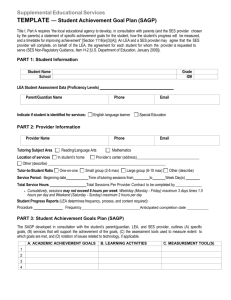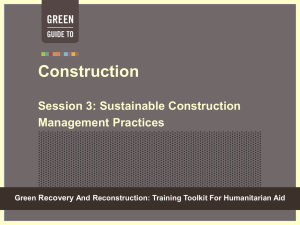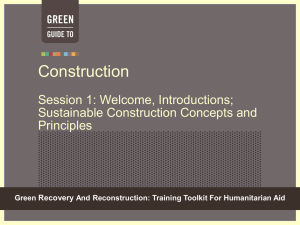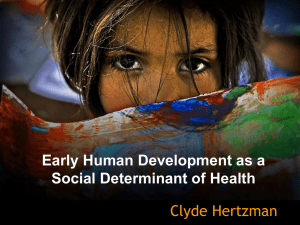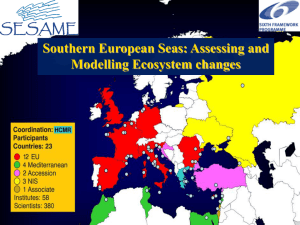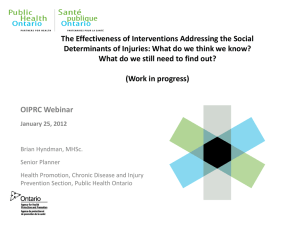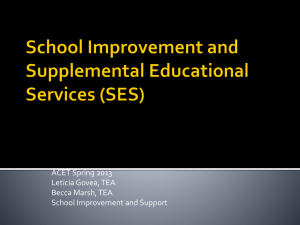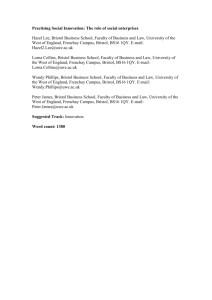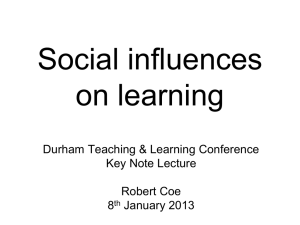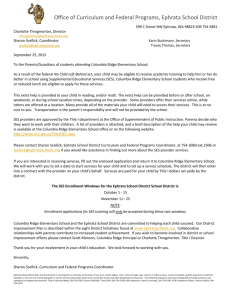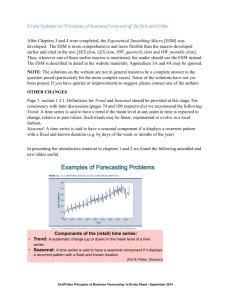Professor Barkema
advertisement
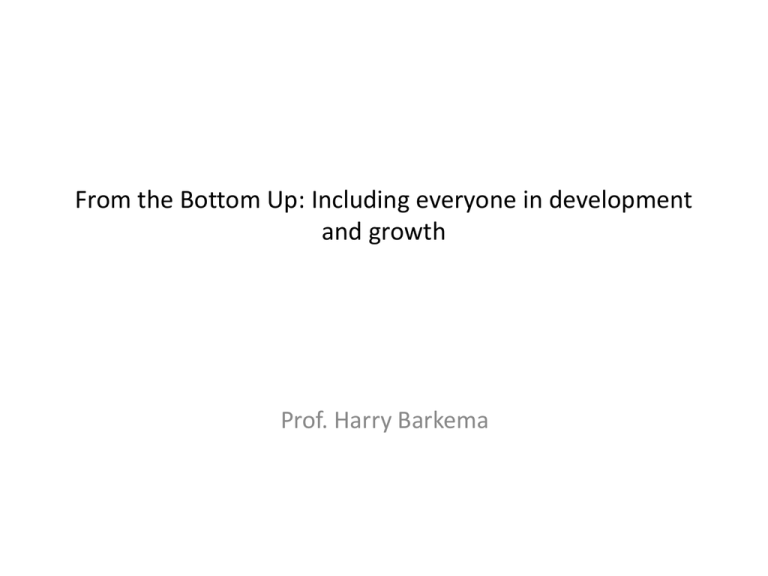
From the Bottom Up: Including everyone in development and growth Prof. Harry Barkema Some facts you know… – Economic growth SA: 3.5% (2011), 2.5% (2012), 2% (2013)? • About half the growth rate of rest sub-Saharan Africa – Growth for whom? Gini coefficient 1995: 0.64 – 2005: 0.72 • Bhorat, Van der Westhuizen, Jacobs (2009) – Richest 10%: + 40% • Mostly from wages (growth tertiary sector) • Increasing group of Africans – Income has increased for everyone – but most for top > 70% • For lowest 50% of incomes, grant income is > 40% of their income • Without grants, incomes decreased for lowest 40%; Gini coefficient 0.75 • 5 million tax payers, 10 million on grants – Story of two economies segregated socially, economically, spatially – Key question: what can we do about it? • Crucial for ‘2nd’ economy, overall economy, “1st” economy How to engage 2nd economy? – “Normal operations” companies, government… – Targeted programs: Companies – inclusive supply/ value chains (mining, FMCG, beer companies), low-cost versions (finance/ insurance…) – Government (programs / employment, health care, education..) – My talk: social enterprises (SEs)? • Really about SEs, NGOs, social business part companies, hybrid forms (partners, ecosystems): the same insights, concepts, methodologies, tools apply – Many useful initiatives: solar, part of supply/value chains for companies / government, handicraft, micro finance (but Capitec).. – Useful contribution, but SEs usually remain small, effect on poverty limited However… Impact on poverty reduction/ engagement can be increased through: I. SEs useful experiments for learning by companies, government programs (education, health care, etc.), NGOs which do scale up – Examples India: Gyan Shala (linked to government schools), LifeSpring Hospitals (30-50% of the costs) • Create ecosystems of SEs with companies, government agencies, etc. • New concepts, insights, methodologies, tools for business model innovation apply to governments, MNCs (social business part), NGOs, hybrids, design ecosystems as well • Examples: MNCs in favelas, Africa/SA; NGOs in India, Uganda; SEs in SA, India, South America.. Moreover… II. We’re learning how to scale up BMs for SEs as well – not reach 100s of clients, but 10,000 .. 100,000 … 1,000,000 .. – Key insight: Managing organizational growth stages: like butterflies – qualitatively different stages – not like trees, dogs, humans, … • Stages type I: One BM: concept development launch scale: different types of leaders, social networks needed for success • Stages type II: One BU (geographic area) next: How to adjust BMs &why & when; how to transfer knowledge (mechanisms)… • Stages type III: Entrepreneurial mature organization • Helps to manage scaling and growth. Explains ‘missing middle’ as well? Great…but does it reduce poverty? – First: What is poverty reduction? – Lower price for poor people (Prahalad version/ needs-based approach; cheaper health care, water… )? – Give them a loan, training, access to markets (resource-based approach: MF, supply/value chain companies)? • “Cliché:” don’t give them a fish, but a fishing rod • However, in reality, there may be many social constraints on ‘freedoms’ – “Integrated approach to remove key constraints keeping people poor (economic and social constraints; capability approach cf. Sen) • “Gold standard” according to many – How could this work? Let’s take the case of a township here in Cape Town: Bridgetown (urban poverty) – Bridgetown: Many “constraints on freedom:” Lack of jobs, education, crime/ drugs, lack of safe space • E.g., cf. in-depth ethnographic study of Heideveld (Jensen) – Part of the problem: Gangs • But “Skollie” is also son/ family member, member soccer club, hustler.. Role of gangster may be dormant most of the time • Key: dignity (respect), safety within own territory (also from stigmatization) • Alternative hierarchies in township: neighborhood watch with police, church.. – Kids: perceived constraints on freedom: lack of employment, education, weak communities, broken families • They suggest many solutions: jobs, education, support (social not economic) to strengthen families, leadership training (for ‘fathers’), safe space to play and be, ‘soft’ furniture , presence of (supportive) adults – What to do? Minimum pressure points idea (Juli Huang): let’s start with the gang members Rehab program. Then came an NGO / SE called R-Labs… R-Labs in Bridgetown – Rehab PLUS training program (IT) • Engaging other groups within Bridgetown as well – Flat structure merit-based hierarchy • Emphasis on dignity and respect, additional training/skills, responsibility, respect – Revenues from web site creation, community building; NGO PLUS SE – Plus incubator for new SEs • Our UCT-LSE students work with these SEs design new business models/ social businesses • Work with Francois Bonnici – Bertha Centre for social entrepreneurship UCT(through Max Price) – R-Labs used by government for policy development – Now internationalizing to 20 countries – In sum: NGO/ SEs; inspires government; is scaling up; engaging 2nd economy through community change – Of course would require additional facilities/ government as well In sum… We can / need to engage talents of the 2nd economy: – ….Of course through normal activities companies, government… – .. dedicated programs government (education, health care etc.)… – … and probably less spatial (and so economic and perhaps ultimately social) segregation 1st and 2nd economy • Thandika Mkandawire – BUT ALSO increasingly: SEs – NGOs, social business part of companies, lowcost government programs, hybrids/ecosystems – We’re currently learning better which insights, concepts, methodologies, tools enable 1) successful BMs; 2) how to scale them; 3) in a way that reduces poverty through community change – From the Bottom Up: Including everyone in development and growth • Key that we do: for the 2nd economy (adults, kids), overall economy/ growth SA, 1st economy


